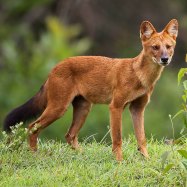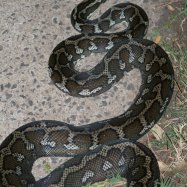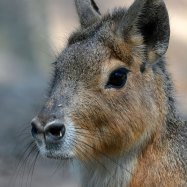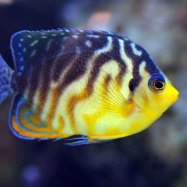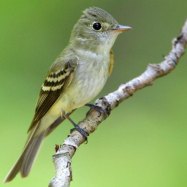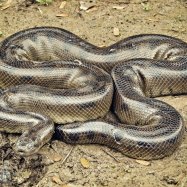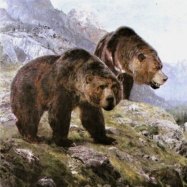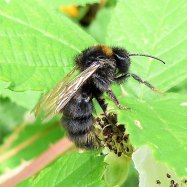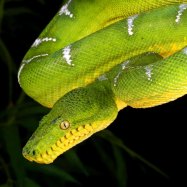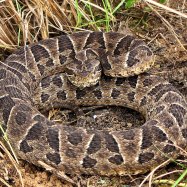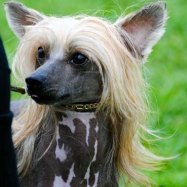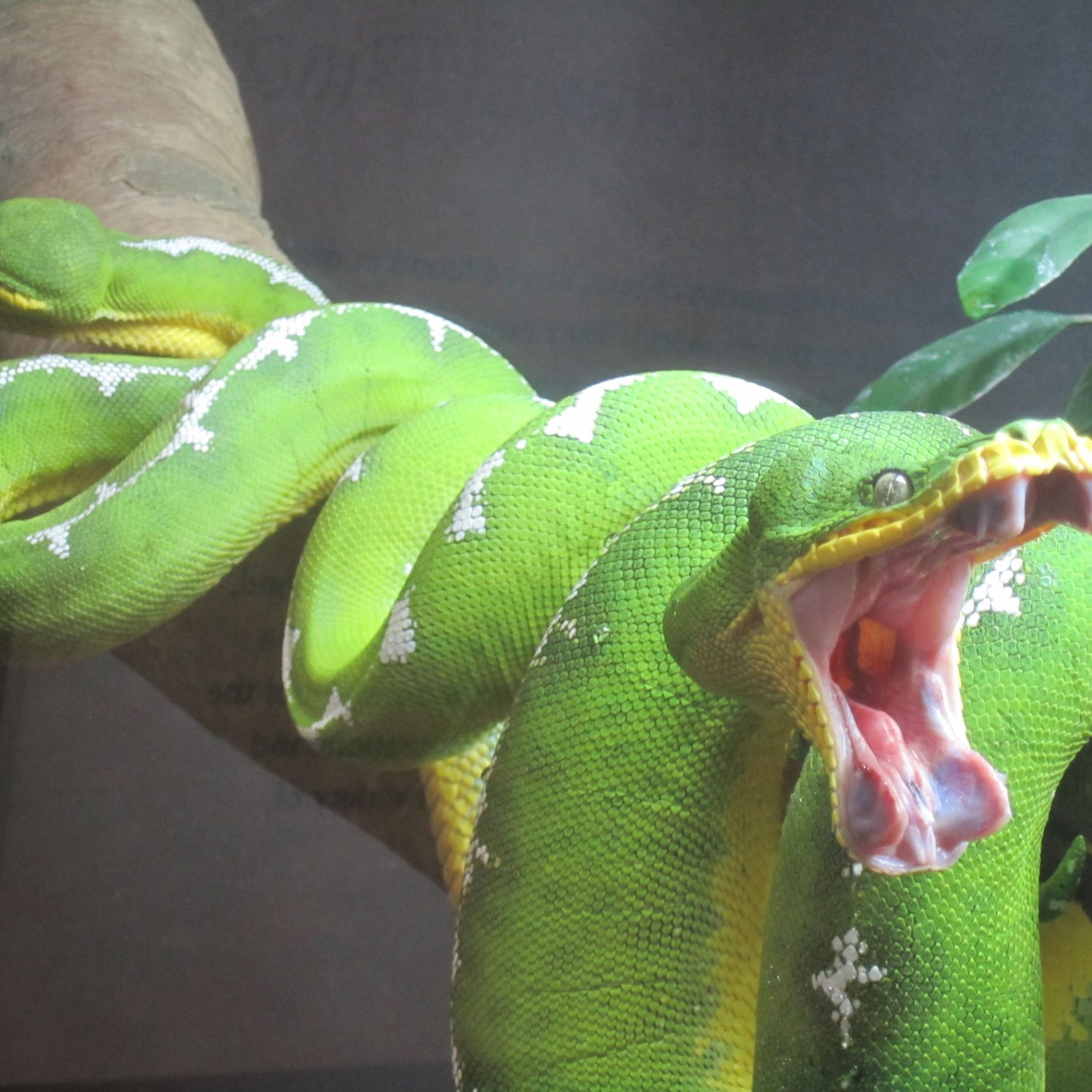
Boas
Generally between 8 and 10 feet, but can reach up to 14 feet
Boas are large, heavy-bodied snakes found in tree canopies, near water sources, and underground. Ranging from 8-14 feet in length, they are part of the Boidae family. Learn more about these fascinating creatures and their behavior in the wild. #Boas #AnimalsB #Boidae #NatureFacts
Animal Details Summary:
Common Name: Boa
Kingdom: Animalia
Habitat: Tropical rainforests, savannas, and semi-arid environments
The Mighty Boas: The Constricting Predators of South and Central America
Nature is full of fascinating creatures, from the smallest insects to the largest mammals. And among these, reptiles hold a special place, with their otherworldly appearances and unique behaviors. One such reptile that commands attention is the mighty Boa constrictor, commonly known simply as the boa.Boas are members of the order Squamata, which also includes lizards, snakes, and amphisbaenians Boas. They belong to the family Boidae, which consists of large, constricting snakes found in tropical regions around the world. The Boa constrictor, in particular, is found in various countries in South and Central America, making it a well-known and widely studied species in the region.
The Anatomy of a Boa
Like all reptiles, boas have scaly skin, which allows them to retain moisture and regulate their body temperature. Their skin also helps them blend in with their surroundings, as they are predominantly brown, tan, gray, or green in color, depending on their habitat. Their overall body shape is large and heavy-bodied, with a thick muscular build.Boas also have a unique feature among snakes - they are ovoviviparous, meaning they give birth to live young. They do this by retaining eggs inside their bodies until they hatch, and then giving birth to live offspring. This is in contrast to oviparous reptiles, who lay eggs and have no connection with their young after hatching.
Habitat and Geographic Distribution
Boas are found in various habitats in South and Central America, including tropical rainforests, savannas, and semi-arid environments Bighorn Sheep. They are well-adapted to different surroundings, and can also be found living near human settlements. Boas are capable climbers, and can often be found in tree canopies or hiding in shrubs and bushes. They also have been known to take shelter in abandoned buildings and underground burrows.In terms of geographical distribution, boas can be found in many countries in South and Central America, including Mexico, Brazil, Peru, Colombia, and Bolivia. They have also been introduced to other countries, such as Puerto Rico and Florida in the United States, due to the pet trade.
The Eating Habits of Boas
Boas are carnivorous, meaning they feed on other animals. They are skilled predators and use a constricting method to subdue their prey. Boas, like other snakes, have a unique feature known as the "stretchy jaw," which allows them to expand their mouths and swallow prey much larger than their own head. This is especially helpful when, in the wild, boas can come across prey as large as capybaras or even deer.Once a boa has captured its prey, it will use its powerful coils to squeeze and suffocate the animal. This is a slow and methodical process, as boas have a lower metabolism and do not need to consume food as frequently as other animals. After the prey is dead, the boa will swallow the entire animal whole, taking up to a few days to digest its meal.
The Behavior of Boas
Boas are solitary and nocturnal animals, meaning they are active at night. They are also ambush predators, using their camouflage to blend into their surroundings and patiently wait for prey to come within striking distance. Boas are not aggressive towards humans, and most human-boa encounters happen when the snake is defending itself from perceived threats.Boas have a slow and methodical hunting style, relying on their strength and patience rather than speed and agility. They are also capable swimmers, and often can be found near water sources, where they may hunt for prey or cool off.
The Importance of Boas in Their Ecosystem
Despite being feared by some humans, boas play an essential role in their ecosystem. As predators, they help control the populations of their prey, which helps maintain a balance in the ecosystem. Boas also act as prey for other animals, such as birds of prey and large mammals, helping to sustain those populations.Boas also have cultural significance in their native countries, with many indigenous cultures and traditions incorporating these majestic creatures in their beliefs and practices. In some areas, boas are seen as symbols of fertility, while in others, they are considered protectors of nature.
Conservation and Protection of Boas
Boas, like many other reptiles, face threats from various human activities, such as habitat destruction, hunting, and the pet trade. While they are not considered endangered globally, some subspecies of Boa constrictor (such as the Puerto Rican Boa) are listed as endangered or critically endangered.Fortunately, many organizations and individuals are working towards protecting and conserving boa populations. This includes monitoring and regulating the pet trade, creating protected areas for the snakes to thrive, and raising awareness about the importance of these creatures in their ecosystems.
Getting Up Close and Personal with Boas
For many people, the thought of encountering a boa in the wild can be intimidating. However, when boas are kept as pets, they can make fascinating companions, with their unique behaviors and impressive appearance.If you are interested in owning a boa, it is crucial to do thorough research and understand the responsibility that comes with it. Boas require specific living conditions, such as a spacious enclosure and a diet of live animals. They also need regular handling and care to stay healthy.
Before purchasing a boa, make sure to research and find a reputable breeder, as buying a wild-caught boa can harm wild populations. It is also important to note that owning a boa is a long-term commitment, as they can live up to 20 years in captivity.
The Power and Grace of the Boa
In conclusion, boas are powerful and graceful creatures that have been captivating humans for centuries. With their unique features and behaviors, they have earned their place in the natural world and continue to be a source of fascination and study. So, the next time you come across a boa, whether in the wild or in captivity, take a moment to appreciate the beauty and importance of these magnificent reptiles.

Boas
Animal Details Boas - Scientific Name: Boa constrictor
- Category: Animals B
- Scientific Name: Boa constrictor
- Common Name: Boa
- Kingdom: Animalia
- Phylum: Chordata
- Class: Reptilia
- Order: Squamata
- Family: Boidae
- Habitat: Tropical rainforests, savannas, and semi-arid environments
- Feeding Method: Carnivorous
- Geographical Distribution: South and Central America
- Country of Origin: Various countries in South and Central America
- Location: Tree canopies, near water sources, and underground
- Animal Coloration: Brown, tan, gray, and green
- Body Shape: Large and heavy-bodied
- Length: Generally between 8 and 10 feet, but can reach up to 14 feet
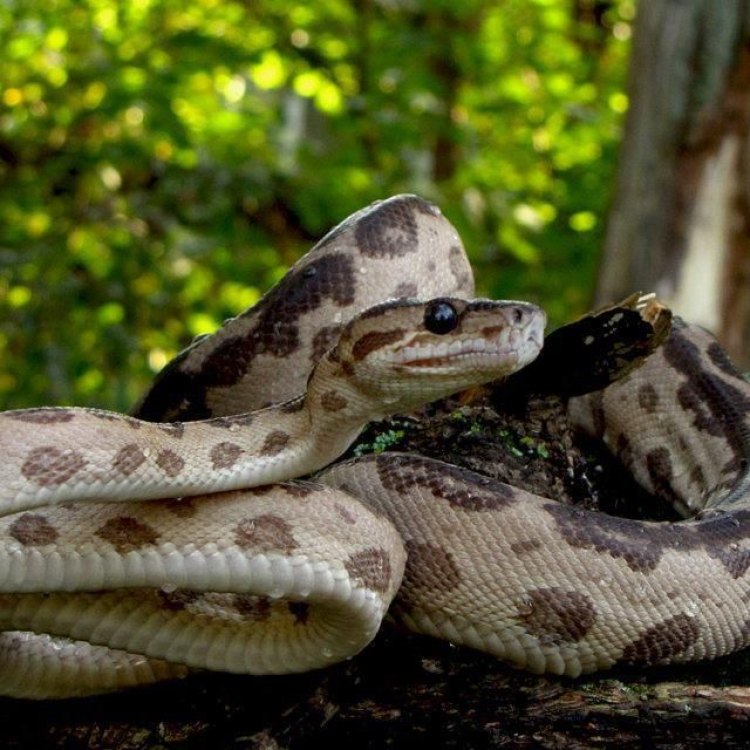
Boa
- Adult Size: Between 8 and 10 feet
- Average Lifespan: Around 20 to 30 years
- Reproduction: Sexual
- Reproductive Behavior: Oviparous - females lay eggs
- Sound or Call: Hisses and low-pitched growls
- Migration Pattern: Non-migratory
- Social Groups: Solitary
- Behavior: Predatory and ambush hunting
- Threats: Habitat loss, illegal pet trade, and hunting for their skin
- Conservation Status: Least Concern
- Impact on Ecosystem: Boas play a critical role as top predators in their ecosystems
- Human Use: Hunted for their skin, used in the pet trade, and seen as symbols in some cultures
- Distinctive Features: Powerful jaws, heat-sensing pits between the nostrils and eyes
- Interesting Facts: Boas are non-venomous constrictor snakes, capable of swallowing prey larger than their own heads
- Predator: Humans are the main predators of boas

Boa constrictor
The Powerful and Mysterious Boas: Unraveling the Secrets of These Enigmatic Snakes
Boas have long captured the attention and imagination of humans, appearing in myths, legends, and even modern-day pop culture. These powerful and mysterious snakes are often feared and revered, with many misconceptions surrounding them. But what are boas really like? How do they live and interact with their environment? In this article, we will delve into the unique features and behaviors of boas and reveal the secrets of these fascinating creatures.Adult Size: Between 8 and 10 feet
Boas are one of the largest snake species, with adults typically reaching lengths between 8 and 10 feet PeaceOfAnimals.Com. However, some species can grow even longer, with the Green Anaconda, a type of boa, reaching an impressive length of over 29 feet. Boas have slender bodies and a distinctive head, with large eyes and nostrils set high on the head. They also have a long and muscular tail, which they use to wrap around their prey during hunting.
Average Lifespan: Around 20 to 30 years
With proper care and nutrition, boas can live up to 30 years in captivity. In the wild, their lifespan may be shorter due to various threats and challenges. However, some species of boas have been known to live up to 40 years in their natural habitat. This makes boas one of the longest-lived snake species.
Reproduction: Sexual
Boas are sexually reproducing reptiles, with males and females coming together to mate and produce offspring. Mating season usually occurs during the warm and wet months, with some species displaying elaborate courtship rituals Bullmastiff. After mating, the female will lay a clutch of eggs, usually in a secluded and safe spot. Some species of boas give birth to live young, while others lay eggs. However, all boas are oviparous, meaning that females lay eggs instead of giving birth to live young.
Reproductive Behavior: Oviparous - females lay eggs
As mentioned earlier, boas are oviparous, with females laying a clutch of eggs after mating. The number of eggs varies between species, with some laying as few as 2 eggs, and others laying up to 80. These eggs are then carefully guarded and incubated by the female until they hatch. This maternal care is a unique behavior among snakes, as most species lay their eggs and leave them to hatch on their own.
Sound or Call: Hisses and low-pitched growls
Boas are not known for their vocal abilities, but they do have a unique way of communicating through hisses and low-pitched growls. These sounds are produced by the muscles around their nostrils, which they use to regulate their breathing. These vocalizations are often used as a warning to potential predators or during mating rituals.
Migration Pattern: Non-migratory
Unlike some snake species, boas are non-migratory. This means that they do not travel long distances in search of food or during certain seasons. Boas usually have a small home range, and they do not venture too far from it. They are also not known for their traveling abilities, making them less likely to be found in new or far-off locations.
Social Groups: Solitary
Boas are solitary creatures, meaning that they prefer to live and hunt alone. They do not form social groups or have any form of social hierarchy. This behavior is common among many snake species, as they do not depend on each other for survival. However, during the mating season, males and females may come together to mate and produce offspring, but once the mating process is complete, they go their separate ways.
Behavior: Predatory and ambush hunting
Boas are known for their predatory skills, with their powerful bodies and impressive hunting abilities. They are ambush predators, meaning that they wait in a concealed location for their prey to pass by before striking. Boas are constrictors, which means that they subdue their prey by wrapping their muscular bodies around them and squeezing until they can no longer breathe. They then swallow the prey whole, using their flexible jaws and sharp teeth to tear apart their prey.
Threats: Habitat loss, illegal pet trade, and hunting for their skin
Unfortunately, boas face many threats in their natural habitats. Habitat loss due to deforestation is one of the biggest threats to their survival. As forests are cleared for agriculture and human settlements, boas lose their homes and food sources. Additionally, they are also hunted for their skin, which is used in the fashion and luxury industry, as well as for their meat. The illegal pet trade also poses a significant threat to boas, with many being captured and sold as exotic pets.
Conservation Status: Least Concern
Despite the threats they face, boas are currently classified as a species of Least Concern on the IUCN Red List. This means that, while their populations may be declining in some areas, overall, they are not in immediate danger of extinction. However, this status can change in the future if conservation efforts are not implemented to protect their habitats and populations.
Impact on Ecosystem: Boas play a critical role as top predators in their ecosystems
As top predators, boas play an essential role in maintaining the balance of their ecosystems. By controlling populations of prey species, they prevent overgrazing or overpopulation, which can have detrimental effects on the environment. Additionally, their presence helps to control disease and maintain the overall health of their habitats.
Human Use: Hunted for their skin, used in the pet trade, and seen as symbols in some cultures
Boas have been used by humans for various purposes throughout history. In some cultures, they are seen as symbols of power, wisdom, and fertility. Some indigenous communities even use their skin and bones in traditional medicine. Unfortunately, this has also led to overhunting of boas for their skin and other body parts.
Distinctive Features: Powerful jaws, heat-sensing pits between the nostrils and eyes
Boas have several distinctive features that make them stand out from other snake species. One of the most prominent features is their powerful jaws, which allow them to swallow prey much larger than their own heads. They also have a unique ability to detect heat through specialized pits located between their nostrils and eyes. This allows them to accurately locate prey, even in the dark or low light conditions.
Interesting Facts: Boas are non-venomous constrictor snakes, capable of swallowing prey larger than their own heads
One of the most interesting facts about boas is their ability to swallow prey much larger than their own heads. This is due to their flexible jaws and the ability of their lower jaw bones to move independently. Additionally, boas are non-venomous constrictor snakes, which means that they do not use venom to subdue their prey. Instead, they rely on their muscular bodies to suffocate their prey.
Predator: Humans are the main predators of boas
While boas may be top predators in their ecosystems, they also face threats from their most significant predator - humans. Human activities such as habitat destruction, poaching, and the illegal pet trade are all major threats to boas. As humans continue to encroach on their habitats, the survival of boas becomes increasingly uncertain.
In conclusion, boas are fascinating creatures that play a crucial role in their ecosystems. They are not only powerful and skilled predators but also possess unique features and behaviors that make them stand out among other snake species. It is important to understand and appreciate these enigmatic snakes and take action to protect them and their habitats to ensure their continued survival in the wild.
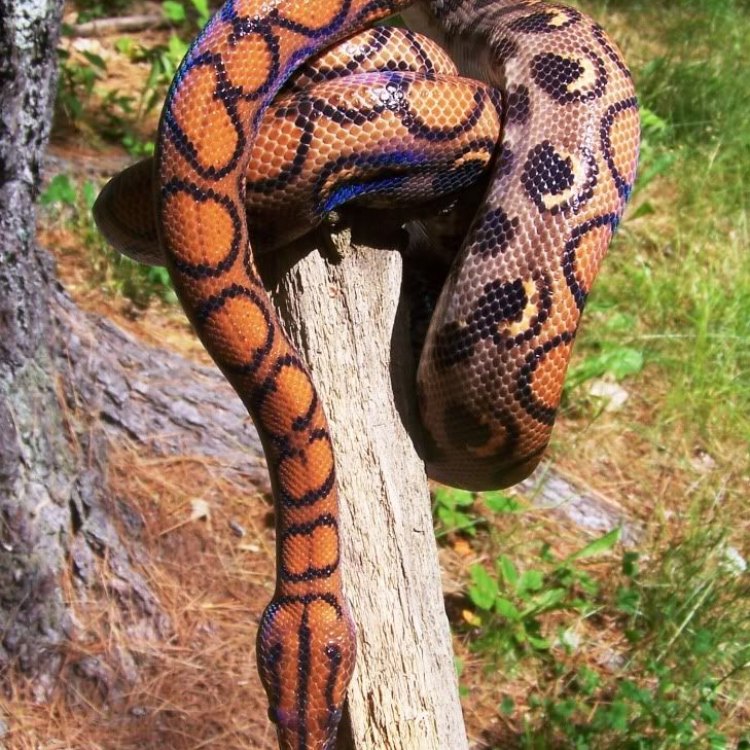
The Mighty Boas: The Constricting Predators of South and Central America
Disclaimer: The content provided is for informational purposes only. We cannot guarantee the accuracy of the information on this page 100%. All information provided here may change without prior notice.

